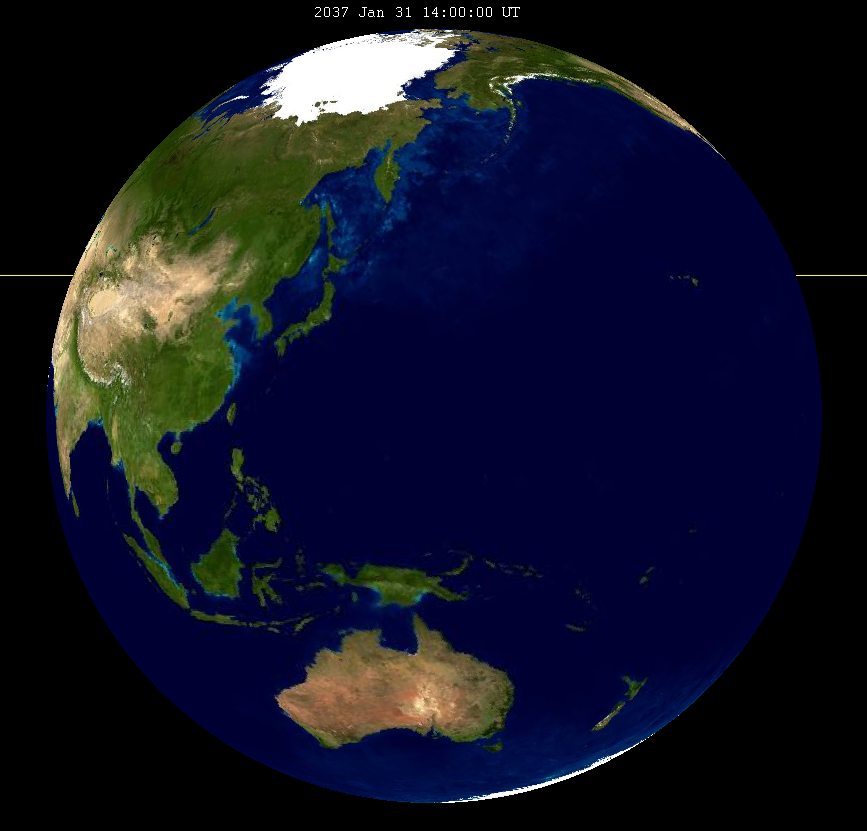January 2037 lunar eclipse on:
[Wikipedia]
[Google]
[Amazon]
A total Hermit Eclipse: Saros cycle 134
/ref> It occurs during a supermoon ( perigee), and

lunar eclipse
A lunar eclipse occurs when the Moon moves into the Earth's shadow. Such alignment occurs during an eclipse season, approximately every six months, during the full moon phase, when the Moon's orbital plane is closest to the plane of the Earth ...
will take place on Saturday, January 31, 2037. The Moon will be plunged into darkness for 1 hour and 3 minutes 41 seconds, in a moderately deep total eclipse which will see the Moon 20.74% of its diameter inside the Earth's umbral shadow. The visual effect of this depends on the state of the Earth's atmosphere, but the Moon may be stained a deep red colour for observers in north and west North America, most of Asia, Australia and New Zealand. The partial eclipse will last for 3 hours and 17 minutes 28 seconds in total./ref> It occurs during a supermoon ( perigee), and
blue moon
A blue moon is an additional full moon that appears in a subdivision of a year: the third of four full moons in a season.
The phrase in modern usage has nothing to do with the actual color of the Moon, although a visually blue Moon (the Moon a ...
(second full moon of month), just like the eclipse of January 31, 2018, one metonic cycle (19 years) previous.
Visibility

Related lunar eclipses
Lunar year series
See also
* List of lunar eclipses and List of 21st-century lunar eclipsesNotes
External links
* 2037-01 2037-01 2037 in science {{lunar-eclipse-stub